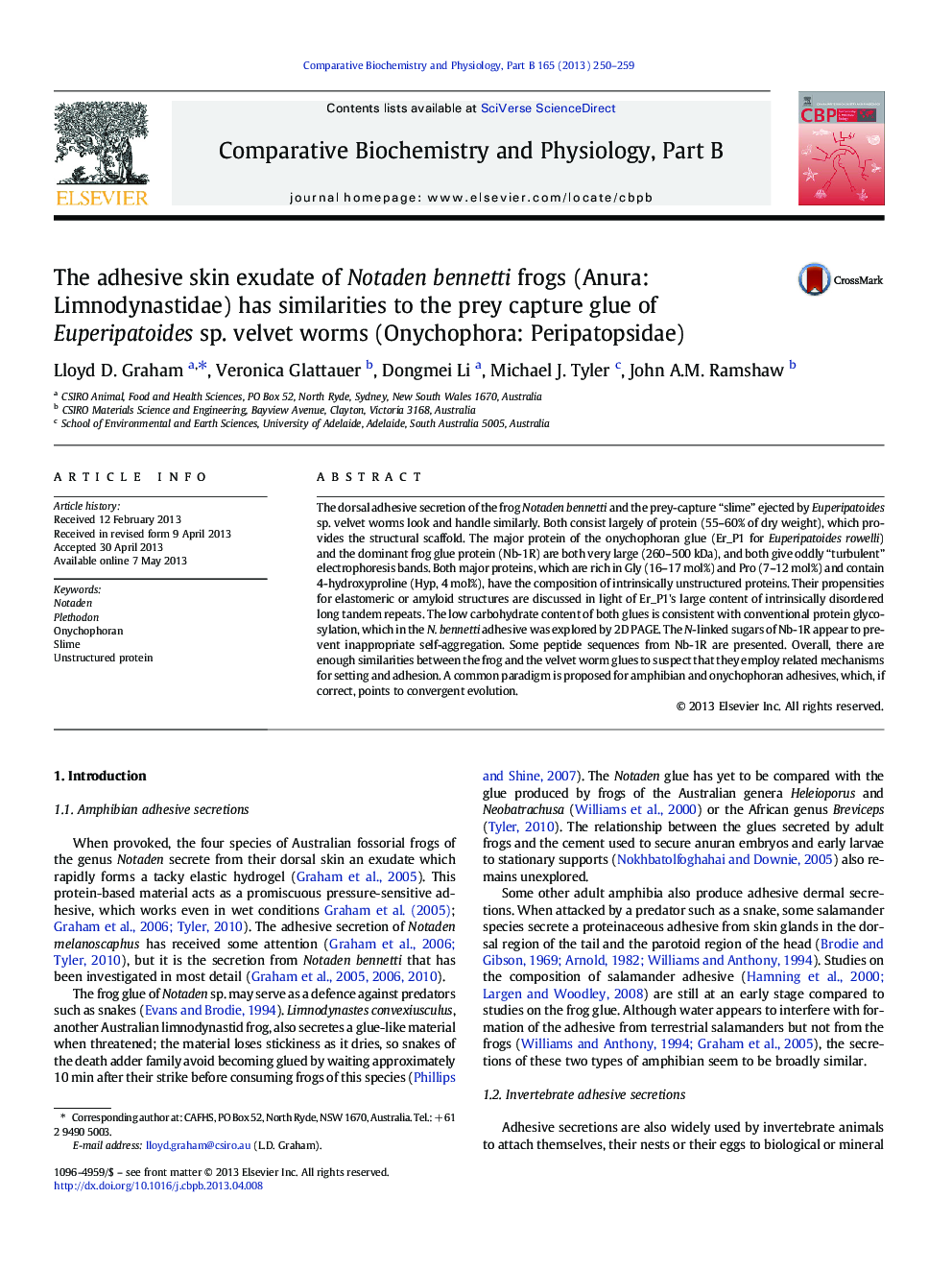| Article ID | Journal | Published Year | Pages | File Type |
|---|---|---|---|---|
| 1975278 | Comparative Biochemistry and Physiology Part B: Biochemistry and Molecular Biology | 2013 | 10 Pages |
The dorsal adhesive secretion of the frog Notaden bennetti and the prey-capture “slime” ejected by Euperipatoides sp. velvet worms look and handle similarly. Both consist largely of protein (55–60% of dry weight), which provides the structural scaffold. The major protein of the onychophoran glue (Er_P1 for Euperipatoides rowelli) and the dominant frog glue protein (Nb-1R) are both very large (260–500 kDa), and both give oddly “turbulent” electrophoresis bands. Both major proteins, which are rich in Gly (16–17 mol%) and Pro (7–12 mol%) and contain 4-hydroxyproline (Hyp, 4 mol%), have the composition of intrinsically unstructured proteins. Their propensities for elastomeric or amyloid structures are discussed in light of Er_P1's large content of intrinsically disordered long tandem repeats. The low carbohydrate content of both glues is consistent with conventional protein glycosylation, which in the N. bennetti adhesive was explored by 2D PAGE. The N-linked sugars of Nb-1R appear to prevent inappropriate self-aggregation. Some peptide sequences from Nb-1R are presented. Overall, there are enough similarities between the frog and the velvet worm glues to suspect that they employ related mechanisms for setting and adhesion. A common paradigm is proposed for amphibian and onychophoran adhesives, which, if correct, points to convergent evolution.
